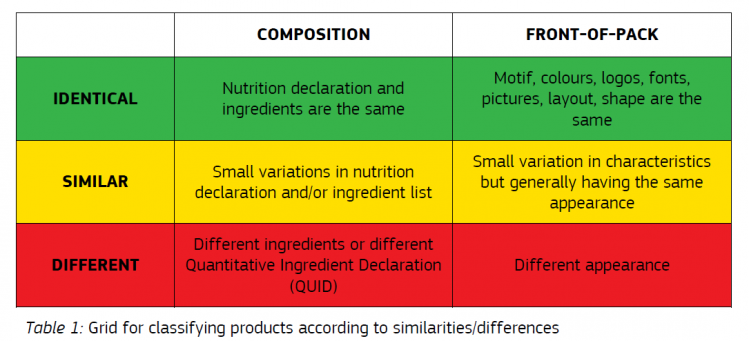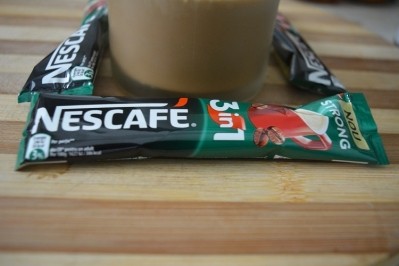Dual quality: Results quash East-West divide debate, yet reveal disparities back-of-pack

The European Commission has today (24 June) published the findings of a comparison study prompted by claims of 'dual quality' food products across the bloc.
Employing a harmonised testing methodology developed by the Joint Research Centre (JRC) in 2018, the Commission collected information on the composition of nearly 1,400 food products – both branded and private label – in 19 EU countries.
Having compared the products’ nutrition declaration, ingredient list and quantitative ingredient declaration with their front-of-pack appearance, the report revealed that approximately one-third of products tested presented either identically or similar branding, yet differing compositions.
What is ‘dual quality’ food?
Dual quality food refers to products marketed in a similar way front-of-pack, which are ‘significantly different’ in composition or characteristics.
The issue caught the media’s attention when politicians from some central and eastern European countries, such as Hungary, the Czech Republic, and Slovakia, used compositional differences in so-called dual quality products to indicate inequality issues between eastern and western Europe.
Indeed, studies in some Member States, conducted between 2016-18, suggested differences in ‘quality-related characteristics’ – such as composition and sensory properties – in finished food products.
In an effort to “outlaw such practices”, EC president Jean-Claude Junker tasked the JRC with developing a methodology to better evaluate the issue.
And MEPs are backing Junker’s stance. In January this year, government representatives voted to blacklist dual quality food with a maximum €10m penalty.
Same same, but different
The study classified all 1,380 samples of 128 different food products according to two criteria: similarity of product packing, and similarly of composition.
A JRC panel evaluated front-of-pack packaging looking at motif, colours, logos, fonts, pictures, layout, and shape. The quantity of an ingredient or category of ingredients (QUID) used in the manufacture or preparation of the products, nutrition declarations, and ingredient lists were also analysed.
According to the report, 9% of products presented as being the same across the EU – with identical front-of-pack appearances – but had a different composition.
An additional 22% of all products tested presented in a similar way but had a different composition.
While these figures conform to some Member States’ suspicions, overall the report found these disparities to be in the minority. Twenty-three percent of products had an identical front-of-pack and identical composition, and 27% of products signalled their different composition in different EU countries with a different front-of-pack.
East vs West
Significantly, the study showed no consistent geographical pattern in the use of identical or similar packaging for food items with different compositions. The findings suggest that contrary to politicised opinion, dual quality is not an East-West issue.
Further, where compositional differences were identified, they did not necessarily constitute a difference in product quality.
Commissioner for education, culture, youth and sport, Tibor Navracsics, who heads up the JRC, said the report prompted a conflicted response. “The results are mixed: while I am happy that they found no evidence of an East-West divide in the composition of branded food products, I am worried that they uncovered up to one-third of tested products having different compositions while being identically or similarly branded.”
According to FoodDrinkEurope and the European Brands Association (AIM), which represent branded food manufacturers, the results were unsurprising. The organisations said they have “always argued” that there is no common division of market for food into ‘East’ vs ‘West’ in the EU.
“Europe’s food and drink companies, small and large alike, take pride in being able to serve the richness of diversity in consumer preferences, whilst standing behind high quality, sustainability and brand consistency across Europe. We hope that the publication of the JRC report will provide reassurance to consumers, authorities and other stakeholders,” noted FoodDrinkEurope director general Mella Frewen.
Michelle Gibbons, director general of AIM, similarly welcome the findings. “As can be seen by the detail in the report, brands manufacturers in Europe have partnered with the European Commission and the JRC to ensure all facts have been made available to clarify this key issue. We look forward to continuing this constructive dialogue in the future, as we all seek to deliver the absolute best for consumers and communities around Europe.”
What next?
The report does not indicate whether food brands have violated EU law, which the Commission said is the responsibility of individual Member States.
“An additional case-specific assessment by a competent national authority would be required to assess whether the identical marketing of products with significantly different composition would constitute a misleading practice, violating EU law, taking into account other relevant factors (notably the legitimacy and the objectivity of any justification provided by the relevant owner)," concluded the Commission.
The EU will, however, support Member States in their dual quality investigations under the existing legal framework. Its revised Consumer Protection Cooperation (CPC) regulation – which will help authorities investigate potential breaches across borders – will come into effect as of 17 January 2020.






















